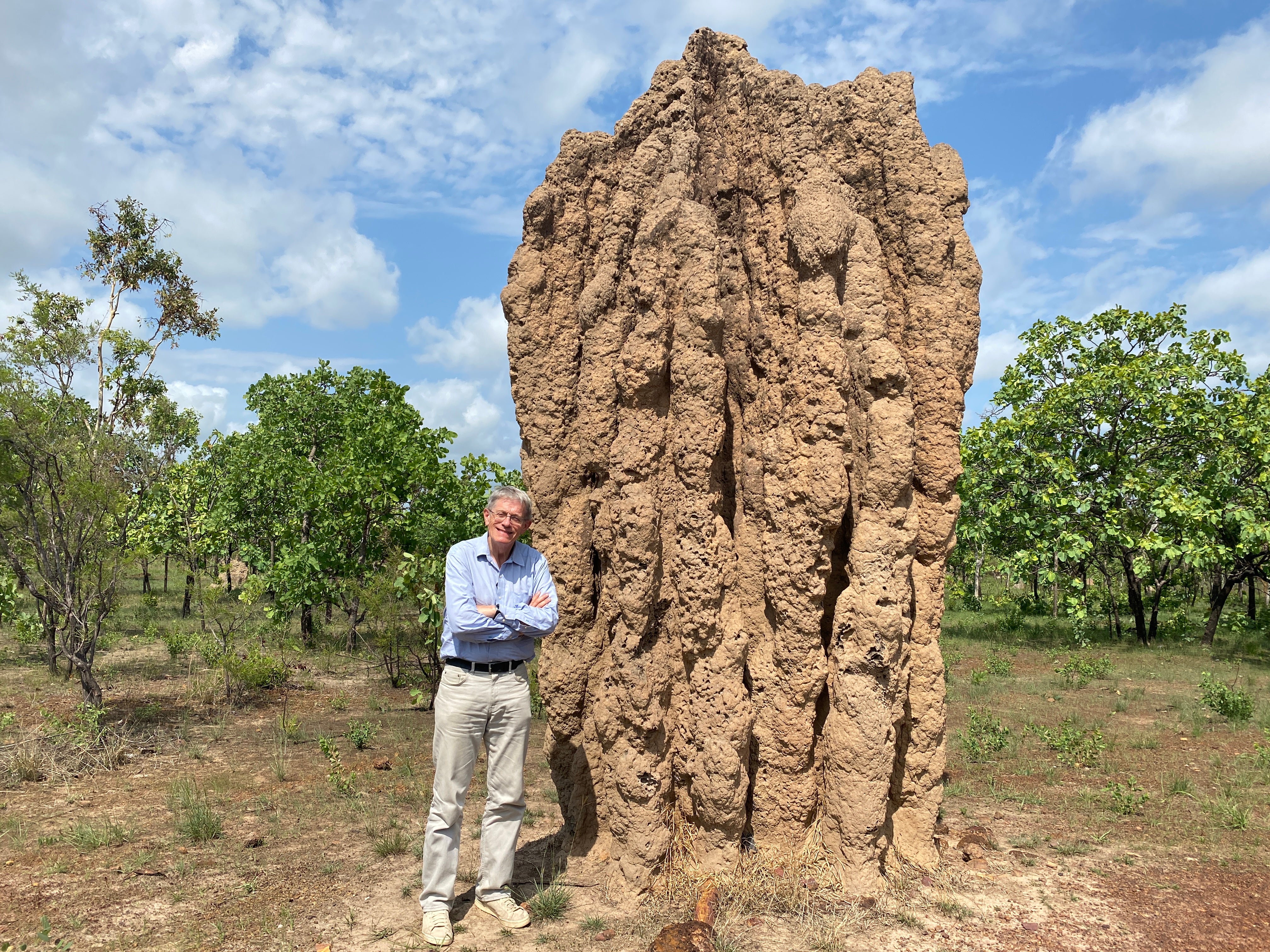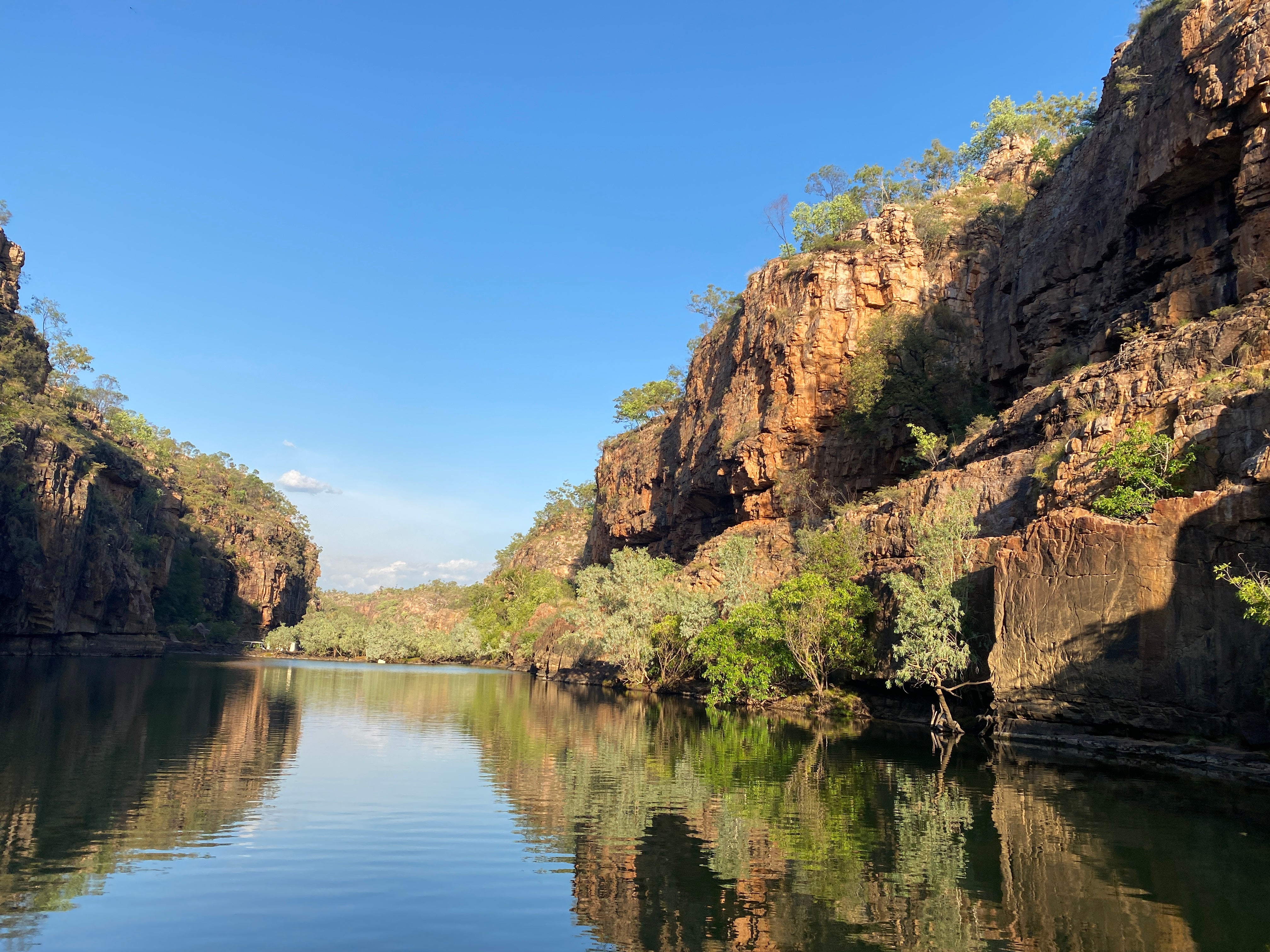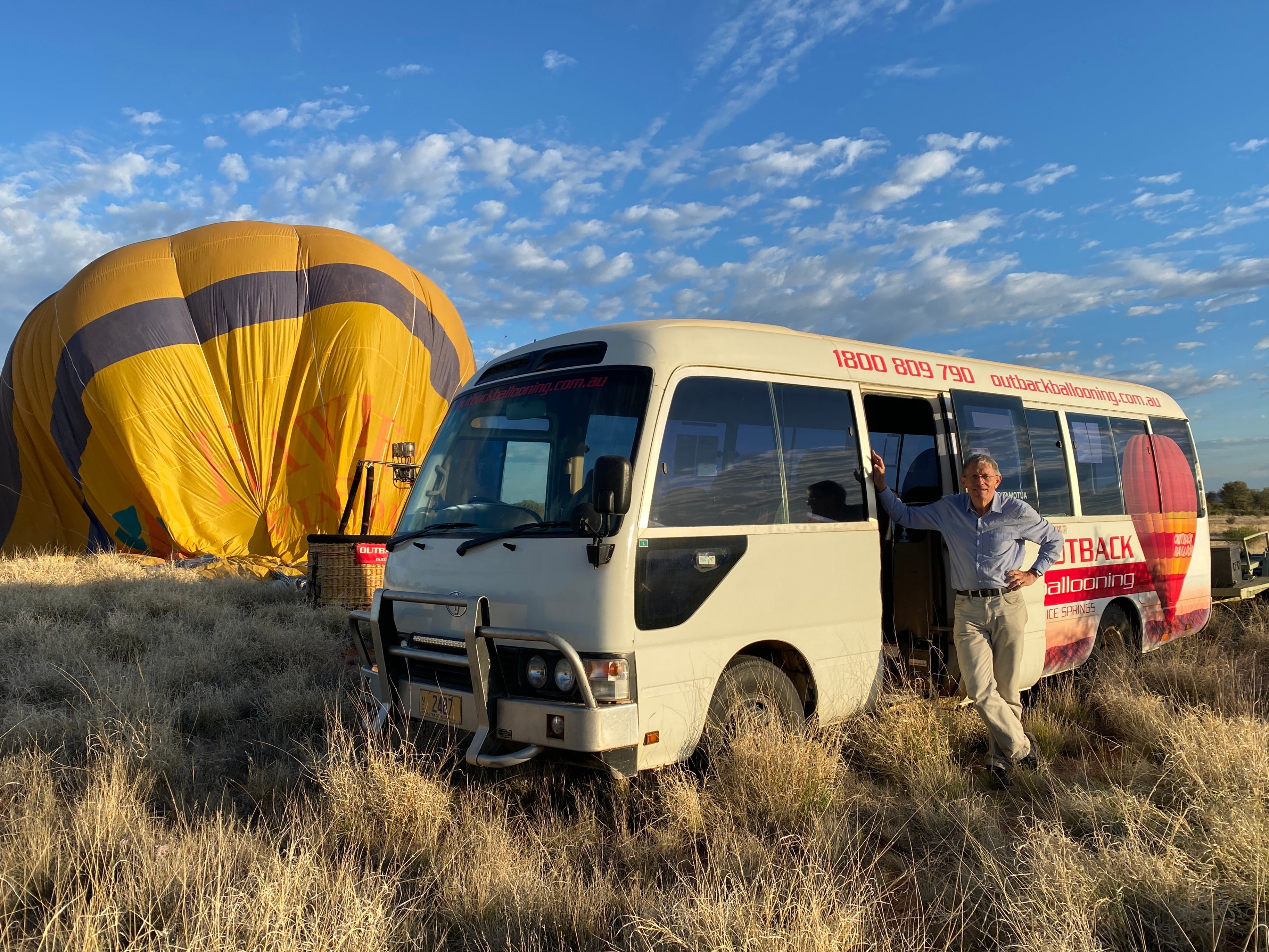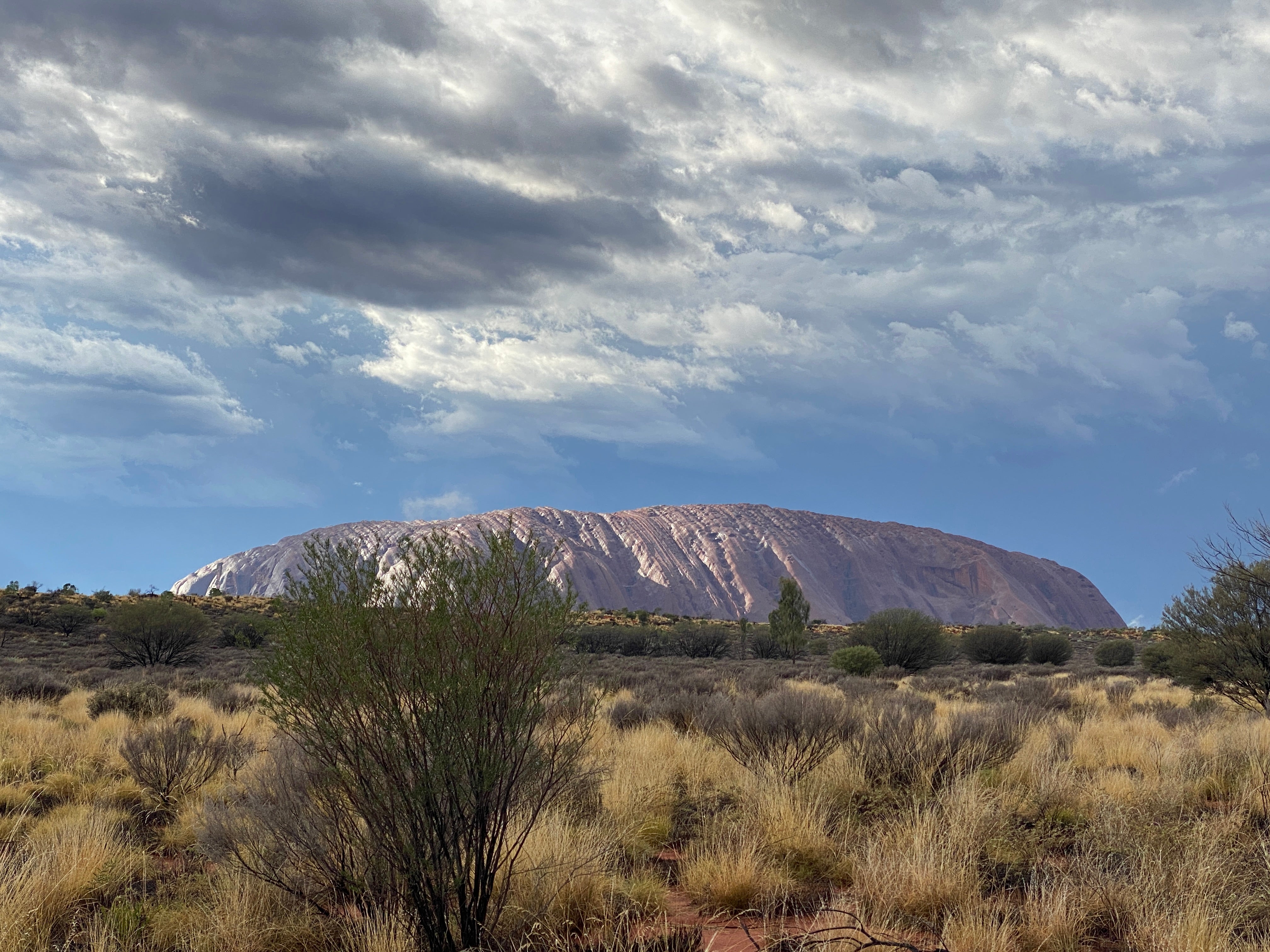Adventure territory: 10 days on the road to Australia’s heart
From a delicious Darwin foodventure and ballooning around Alice Springs to marvelling at the majesty of Uluru, Australia’s Northern Territory makes for a truly unique, experience-packed itinerary. Here Simon Calder shares his highlights from a trip exploring city, outback and everything inbetween
A window seat: I always ask for one on a flight to Darwin. The approach makes the heart beat faster, as you cross the mosaic of land and water that characterises the Top End of the Northern Territory. Once off the plane – and through the the speedy arrivals formalities – the warm embrace of the tropics welcomes you. Time for adventure: on my latest trip, a 10-day celebration of culture, cuisine and landscape.
Closer to Bali than to Bondi Beach, Darwin serves as capital for Australia’s diverse and intriguing Northern Territory. This modest metropolis, full of colour and life, is just the place to begin a journey through the Northern Territory: from the Top to the Rock.
The city is named after the naturalist and father of the theory of evolution, Charles Darwin, but it was was originally known as Palmerston. The original town hall is one of very few buildings constructed before 1974 of which anything survives. Across the road, all that remains of the original Anglican cathedral is the entrance, silent testament to the destructive power of nature. The reason: overnight on Christmas Eve, 1974 Cyclone Tracy brought destruction to Darwin.
Due to the extreme weather event half-a-century ago, Darwin looks a thoroughly modern capital – with a vibrant 21st century art scene. In the past few years, local and international artists have brightened many city-centre walls. You can even bring the art to life using the Darwin street art festival app, which gives you some extraordinary augmented reality.
Creativity continues in a satisfying fashion when you join an official Gourmet Tour, sampling the best of Darwin’s bars and restaurants. My gastronomic journey began on the waterfront at Snapper Rocks with some exquisite seafood. That was quickly followed by Sri Lankan street food at Ella by Minoli – where delicious dishes are created by celebrity chef Minoli de Silva, star of Australia MasterChef.
Between April and October, sunset is a delight at Mindil Beach – where Darwin’s multicultural magic is most in evidence. Every Thursday and Sunday more than 200 stalls dispense unique crafts and cuisine. Thai, Korean, Japanese, Spanish and Italian are just some of the cuisines on offer. But a favourite here in Darwin is laksa, the great South East Asian soup – best consumed with fresh papaya juice on the beach as the sun sinks into the majestic harbour.
Discovering ancient wonders

Time to hit the road. Three hours’ drive east of Darwin along the Arnhem Highway, nature and humanity converge to spectacular effect at Australia’s largest national park, Kakadu. A large and elaborate sign means you can’t miss the entrance: gateway to a wilderness that is the same size as the entire nation of Wales (20,000 square km). Since Kakadu was designated as a national park in 1980, sustainable tourism has involved the traditional custodians of the land – who today interpret and explain the landscape and its artistry for visitors.
In conventional art galleries, works are displayed outside their original context. Here in Kakadu National Park you encounter rock art where it was created. I was shown around some of the 5000 rock art sites by James Morgan, who belongs to the Bininj nation. He takes tourists time travelling as he interprets one of the oldest art galleries in the world – where every work has a meaning to First Nations culture.
Some of the most spectacular examples are at Burrunguy, beneath a dramatic escarpment. The rock art is protected by the Bininj clan, and not all of it can be filmed or photographed out of respect for the people depicted. A guide will help you respect the culture – and understand the stories told by the artist.
Much of the rock art was created in shelters where people have lived for millennia. “This specific shelter that we’re standing in here was used for at least 20,000 years,” says James – a reminder that Australia is the world’s oldest continuous living culture.
A million stories are reflected in the rock art of extraordinary antiquity.
Compelling creeks and gorgeous gorges

An essential component of any road trip in the Northern Territory is the joy of exploring the settlements along the way. Pine Creek is the point where the Kakadu Highway and the Stuart Highway converge, about 225km southeast of Darwin.
In the early 1870s, the men who were building the Overseas Telegraph line across central Australia discovered gold here at Pine Creek. A Gold Rush was on – luring people from right across Australia, plus 2000 workers of Chinese origin.
Keep going south to Katherine – “where the tropics meet the Outback” – to be immersed in Aboriginal culture. At an enlightening and entertaining enterprise called Top Didj, an Aboriginal Elder, Manuel Pamkal, taught me about some skills for living in the Territory: creating fire, hunting and mastering the didgeridoo. Then I followed the Katherine River to Nitmiluk Gorge.
Seeing the gorge from water level provides a whole new dimension to the natural beauty. Cliffs come to life in the changing light, shifting their shapes and shadows. Nitmiluk is the name given by the Jawoyn people; the Europeans called it Katherine Gorge. To round off an unforgettable day, take the Nabilill sunset cruise – with dinner. It’s gastronomy on the go: you dine on freshly cooked local produce as you glide through spectacular scenery towards the setting sun. Celebrate your good fortune with the other lucky guests – or just let yourself be smitten by the natural beauty.
A new perspective in Alice Springs

The deeper you venture into the Northern Territory, the richer the experience becomes. At Alice Springs, the de facto capital of central Australia, take a hot-air balloon trip at dawn. You can see how Alice Springs fills the valley – and survey the MacDonnell Ranges that sweep across the horizon. It’s said they were once mountains to rival the Himalayas.
The range is perforated by gorges sculpted by the ages. Just 20km outside Alice Springs you reach Simpson’s Gap. This narrow passage through the mountains, and the surrounding area, comprise an important spiritual site to the Arrernte Aboriginal people – known as Tjoritja.
At Ormiston Gorge, your reward is a lake filled with clear, crystal water and fringed by a beach. Even though the nearest sea is 1,500km away in either direction, there is nothing to beat the feeling of the sand beneath your toes and the fresh, cool water.
Life reduced to the basics: sky, rock, water and joy.
With a 4 x 4 vehicle, you can continue around to King’s Canyon – where time and nature have created an image of sheer beauty in one of Australia’s most remote corners. Four hundred million years ago this was a windswept sandstone plain covered in sand dunes. Today, the canyon is at the heart of Watarrka National Park.
The 6km Rim Walk provides a sequence of magnificent views, as the walls drop up to 300m from the plateau to the floor of King’s Canyon. And after you have seen the view from the top, you can wander through the creek that formed the canyon.
On the road to Uluru

The more time and energy you invest in a visit to Australia’s Red Centre, the greater the rewards.
Imagine for just a moment that Uluru did not exist: people would still be drawn to central Australia by Kata Tjuta – which means “many heads”. A formation even higher than Uluru rises above the desert. Take a walk into Walpa Gorge, sculpted by water and wind into a natural wonder where other-worldly curves of rock reach to the sky.
Time for the main attraction: Uluru. The first nations custodians allow tourists to get close to the rock – and sense its power and significance. Give yourself time to appreciate the monolith from different perspectives throughout the day. Feeling the air change is an unexpected Uluru joy – sometimes wrapping you in heat with the sweet, spicy aroma of the tropics, or bringing you freshness after a downpour.
The rock after rain is very special; as a waterhole at Kantju Gorge fills, frogs emerge to mate – and their calls make it sound as though the rock is singing to you.
Dusk is my favourite moment here: an image that seems seared on the soul of the world: Uluru, rising from the ancient desert in the heart of Australia. Whether it’s your first time or your 100th visit, your spirits will soar.
From rich culture and history to stunning landscapes and wildlife, a holiday in the Northern Territory is an experience like no other. For ideas on what to do, where to stay or to start planning a trip, visit Freedom Destinations, the Territory travel experts. For more travel inspo visit Northern Territory.



